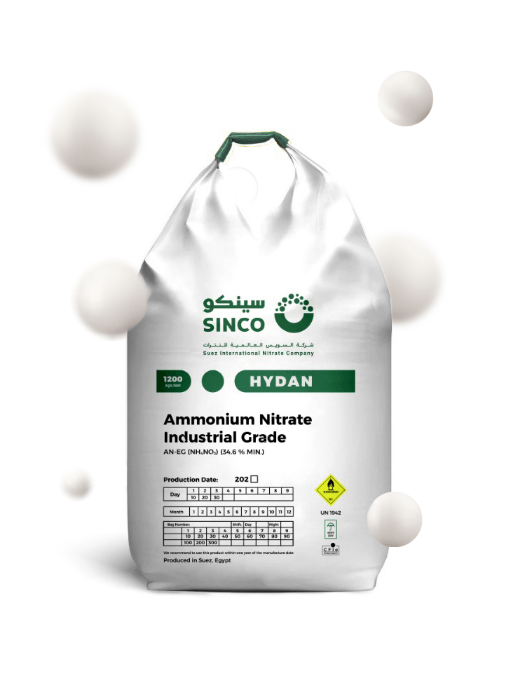
Product Stewardship
Full Product Journey.
At SINCO, our goal is to mitigate the environmental impact of our products throughout their entire life cycle, from production to use. Product stewardship refers to the responsible management of a product’s safety, health, and environmental aspects. This includes product development, sourcing of raw materials, manufacturing, packaging, transportation, storage, marketing, and sales, as well as providing guidance on proper usage.
Securing Product safety and efficiency.
The quality, physical characteristics, and chemical properties of our Products play a vital role in their effectiveness. It’s crucial to maintain the integrity of our products at every stage of their value chain to ensure they perform as expected. Moreover, careful handling, transport, and storage of our products during manufacture and use is essential to safeguard the health and well-being of our employees, partners, and customers.


Ammonium Nitrate storage and handling
Find out about specific requirements for storing and handling Ammonium Nitrate.
Proper storage of Ammonium Nitrate depends on several key principles. First, it should be kept clean and stored away from any substances that can ignite or react with it. Second, it's important to ensure that the storage area is tidy and well-organized to prevent accidents. Third, the material should not be stored in close proximity to other substances. Fourth, it should not be packed too tightly or trapped in a confined space, which can result in a dangerous buildup of heat and pressure. Finally, it should never be stored with other explosives. It's also important to be prepared for any emergency situations that may arise.
It is crucial to ensure that only authorized personnel have access to the areas where Ammonium Nitrate is stored or transported. It is also essential to inform visitors and contractors about the safety regulations they should adhere to.
To Ensure Safety, It Is Important To Take Certain Measures While Handling Ammonium Nitrate.
Here Are Some Guidelines To Follow:
Keep The Bags Safe From Sharp Objects Such As Forklift Forks Or Nails Sticking Out Of Pallets To Prevent Them From Getting Cut.
Ensure That Ammonium Nitrate Does Not Get Stuck In Any Small Spaces Of The Equipment Used To Move It,
As It Could Result In An Explosion In The Event Of A Fire.
Keep The Equipment Used To Move Ammonium Nitrate, Such As Conveyors, Clean And Free Of Any Dirt
Or Ammonium Nitrate Build-Up.
Avoid Putting Anything In The Bins Or Bunkers That Could Mix With Ammonium Nitrate And
Make It Dangerous. Use Luminium Bins Instead Of Wood, Even If They Have A Coating.
Do Not Use Metals Like Galvanized Iron, Copper, Lead, And Zinc In The Bins Or Other Tools Such As Shovels That Come In Contact With Ammonium Nitrate, As It Can Damage The Metal And Cause A Reaction.
Ammonium Nitrate Can Also Damage Copper And Things Made Of Copper, Like Electrical Wires, Switches, Motors, And Electronic Devices Needed For Safety, Such As Fire Alarms, Conveyor Controls, And Rotary Valves.
Design considerations
When constructing a facility to store Ammonium Nitrate, it is important to consider the following guidelines:
- Only store Ammonium Nitrate in single-story buildings.
- Use materials that are fire-resistant and safe for storing Ammonium Nitrate while constructing the facility.
- Ensure that the facility is protected from lightning strikes. Construct the floors using concrete, ensuring that they are level and free of any holes, pits, tunnels, or pockets where molten Ammonium Nitrate could accumulate in the event of a fire.
- If you opt for other types of floors, make sure they are not absorbent to Ammonium Nitrate.
- Create a slope on the floors leading to an open drain system that prevents molten Ammonium Nitrate from getting trapped.
Ventilation and atmospheric controls
It is important to ensure that there is sufficient air flow in the stores by using either natural or mechanical methods. Additionally, it is critical to follow the national guidelines for the safe inhalation of Ammonium Nitrate to avoid breathing in excessive amounts. It is also important to keep the temperature of Ammonium Nitrate below 55°C to prevent overheating.
